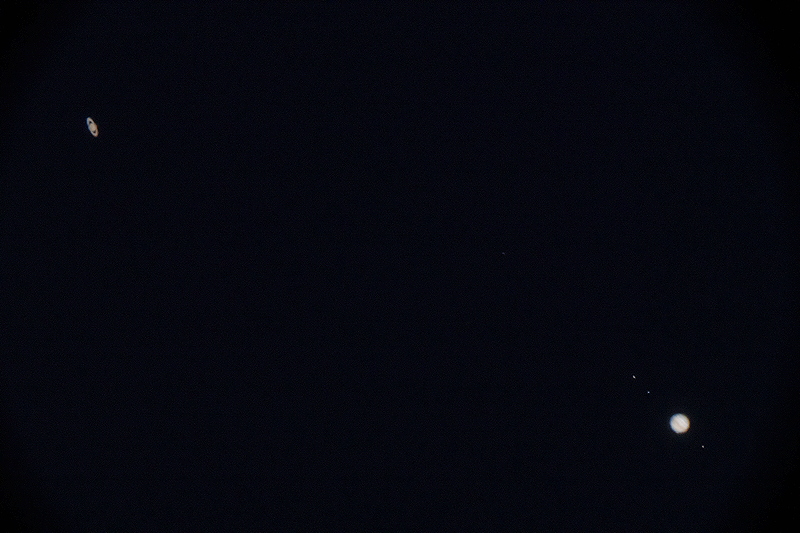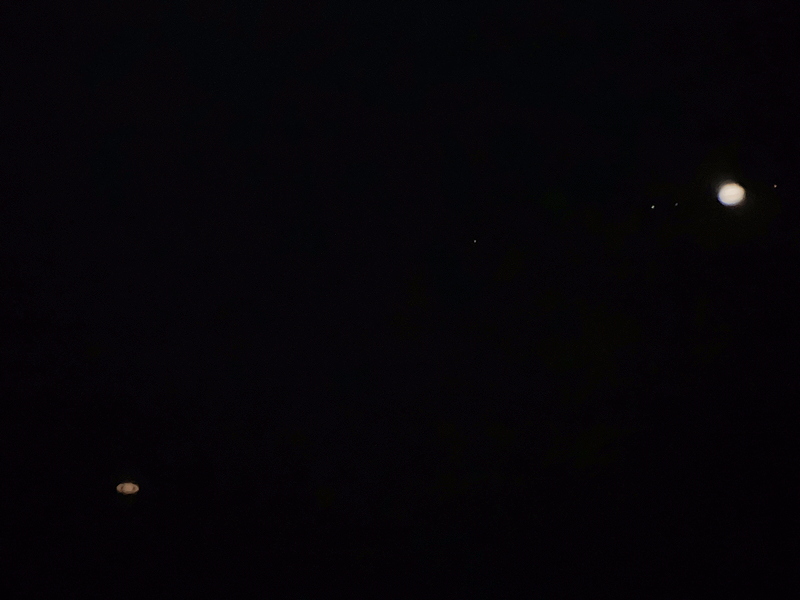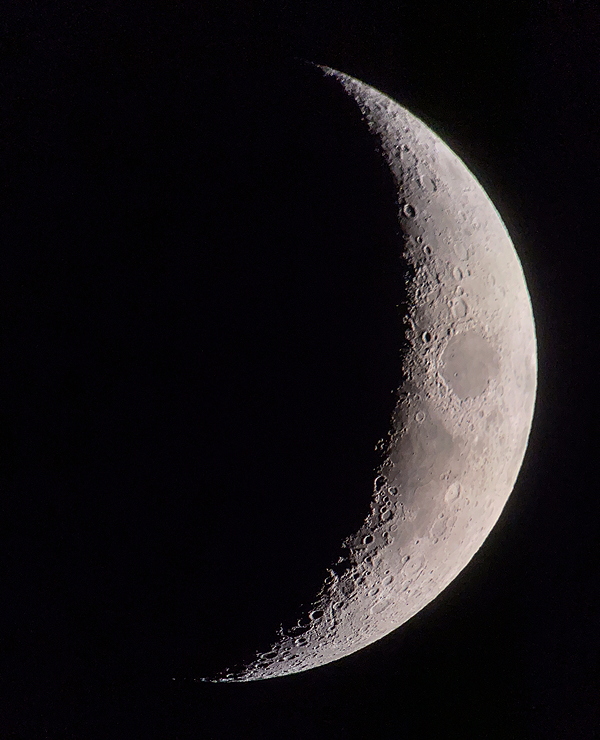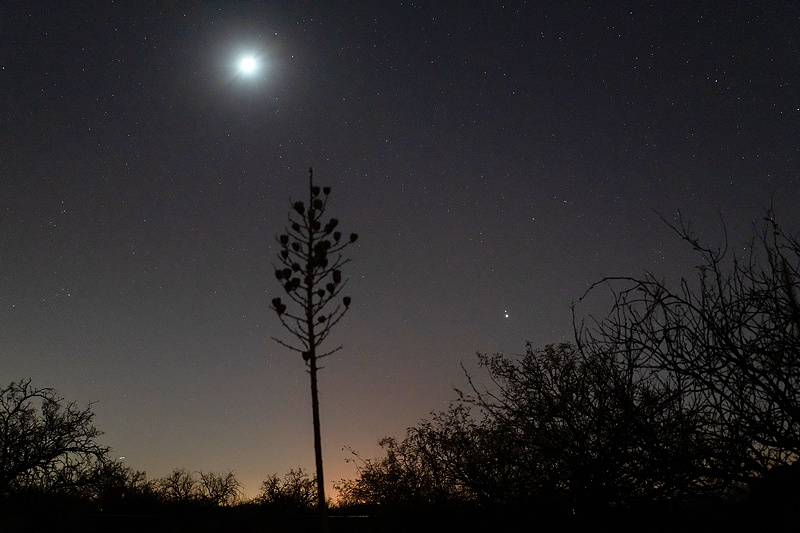Jupiter & Saturn Conjunction 19' 19"
Posted: 19 December 2020
Thursday, 17 December 2020, was overcast. The sky cleared on Friday, 18 December.
|
Open: Friday, 18 December 2020, 1656 MST Temperature: 67°F |
Session: 1573 Conditions: Clear |
Equipment:
12" f/8 LX600 w/StarLock
2" 24mm UWA eyepiece
2" 14mm 100° eyepiece
2" 30mm eyepiece
2" 2X Powermate
Camera:
D850 DSLR
iPhone 11 Pro Max
Action Sports Camera
1702 MST: LX600 ON, StarLock OFF, High Precision OFF.
I then set up the Action Sports Camera to do some initial tests for my upcoming review.
1710 MST: viewed Jupiter and Saturn, separated by 19' 19", 102X. Saturn was faintly visible in the bright sky before sunset. I then switched to the 2" 14mm 100° eyepiece (174X). Both planets were in the same field-of-view (FOV).
1720 MST: sunset (approximate).
1727 MST: mounted the D850 DSLR at prime focus + 2" 2X Powermate. Both planets were in the FOV (as expected). I then began waiting for the sky to get a little darker.
1736 MST: viewed Jupiter and Saturn, 12x50 binoculars.
1738 MST: spotted Jupiter, naked eye. 1743 MST: spotted Saturn, naked eye.
1750 MST: took this D850 DSLR full-frame image, prime focus + 2" 2X Powermate, of Saturn and Jupiter with three moons visible (1/160sec, ISO 1600).

Removed the camera. Now that the sky was darker the view of the two planets at 174X in the 100° eyepiece was really nice.
This handheld iPhone 11 Pro Max afocal 174X photo of the planets was taken with the iOS app NightCap Camera (ISO 1000, 1/40sec, 1X lens). The three moons at Jupiter are visible.

Then viewed the planets and then the Moon, 81X. Did some Action Sports Camera tests.
Used the iPhone for this image of the Moon, afocal 81X, NightCap Camera (ISO 32, 1/400sec, 1X lens).

I then did some lunar observing, 102X and 174X. Viewed the planets again, 174X.
1840 MST: stepped outside of the observatory and took this D850 DSLR photo (f/4, 2 seconds, ISO 2000, FL 38mm) of the southwestern sky with the Moon (overexposed), a Yucca plant, and Jupiter and Saturn (fainter of the two planets).

1844 MST: last look at the planets, 174X and 102X. They were getting low in the sky, but four moons were visible at Jupiter and Titan at Saturn was visible.
1853 MST: LX600 OFF.
|
Close: Friday, 18 December 2020, 1901 MST Temperature: 44°F |
Session Length: 2h 05m Conditions: Clear |
My review of the Tele Vue 2" 2X and 2" 4X Powermates has been published by Astronomy Technology Today.
Comments are welcome using Email. Twitter users can use the button below to tweet this report to their followers. Thanks.
Cassiopeia Observatory Home Page
Copyright ©2020 Michael L. Weasner / mweasner@me.com
URL = http://www.weasner.com/co/Reports/2020/12/19/index.html
